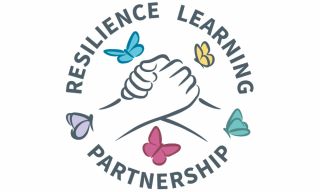

This project is a partnership between Resilience Learning Partnership (RLP) - a trauma-informed, lived experience-led education, enterprise and consultancy organisation - and Sanctuary - a not-for-profit housing association that provides housing and care across Scotland.
In collaboration, RLP and Sanctuary created and funded the role of a Trauma-Informed Community Builder to take a trauma-informed approach to community development work. This position combines an asset-based community development approach with trauma-informed practice to build relationships with people within the community to improve engagement with all groups. Asset-based community development builds on the idea that “communities can drive the development process themselves by identifying and mobilising existing, but often unrecognised, assets”.
The challenge
At the heart of Sanctuary’s work is a recognition that effective housing extends beyond the physical environment and that community development is imperative in creating homes that connect people and provide a sense of place. However, Sanctuary recognised that, in some areas, their community development work was not managing to engage with particular groups of people. They agreed that the service wanted to do more to encourage engagement with these members of the community who were known to be facing a number of challenges but were experiencing barriers to accessing the community supports which might be beneficial to them.
Sanctuary identified that one of the key barriers to engagement was the impact of both personal and collective trauma in these communities and the ways in which this can make it difficult for people to access appropriate support and help within their local areas. As psychological trauma is most often experienced within interpersonal relationships, people who have experienced trauma can often find relationships with professionals and services challenging as feelings of power imbalance, lack of trust, and feeling vulnerable can often echo how they have felt when experiencing traumatic events.
Sanctuary also recognised that asset-based community development alone was not equipped to tackle this, and this led to discussions between Sanctuary and RLP which highlighted that a trauma-informed approach could benefit community engagement.
Outline of project
Sanctuary and RLP agreed that a full-time trauma-informed role was necessary to assist in improving engagement in Carbrain and Kildrum, Cumbernauld. As a result, the Trauma-Informed Community Builder position was created within the Resilience Learning Partnership team, funded via Sanctuary Sustainable Communities.
The combination of the asset-based community development approach and the trauma-informed approach is used to assist in promoting sustainable development by applying the core principles of trauma-informed approaches to the building of trusting relationships. This introduction of trauma-informed practice to the traditional approach aims to strengthen relationships within the community to improve engagement and ensure all members of the community are accessing support and resources that could benefit them. This is a long-term approach which aims to assist the community in sustaining development beyond the capabilities of the post-holder. The post holder's ability to dedicate time to getting to know the community is crucial to this role as it is required to develop trusting relationships and build a feeling of safety for those communities; two key principles of a trauma-informed approach. Additionally, the aim of this role is to create sustainable changes that will be embedded within the community and continue after this role finishes. This empowers the community to take control and use their assets to ensure trauma-informed engagement continues well into the future.
The Trauma-Informed Community Builder engages with the community in their own environment and uses these approaches to build relationships and determine what assets are present to build sustainable community groups. Examples of engagement areas include:
- Community hubs
- Relaxation groups
- Recovery café
- Food banks
- Primary schools where training for teachers and follow up support is provided
The difference between this role and traditional community builder roles is the emphasis on understanding the prevalence and impact of trauma. This includes:
- Fewer constraints to allow the post holder greater freedom in determining the areas that should be targeted within the community.
- Psychoeducation and assisting the community to learn about trauma to encourage discussions and directly acknowledge the trauma people have experienced, individually and collectively.
- Addressing power dynamics. The position is employed through RLP, rather than Sanctuary, in order to overcome any tension due to the perception of authority of the housing service, given that this relationship can at times be challenging to navigate.
- Unlike traditional community builders, this role does not target a single group and aims to build relationships and engagement with the whole community.
- This role is not simply a service being provided, as it aims to facilitate the community to be more independent in order for this work to be sustainable.
Results
Through this work, people within the Carbrain and Kildrum communities appear more connected with each other as a result of the Trauma-Informed Community Builder actively linking different groups throughout the community. This was an important aspect of the work as the aim was to build connection and relationships, particularly as the community is still dealing with collective trauma as a result of the pandemic. Furthermore, the role discovered the capacity, strength and gifts of people in Carbrain and Kildrum, allowing for these assets to be drawn upon to further develop the community in a more independent way.
There have been changes within the people of the community themselves, as building these relationships has allowed individuals to share their challenges and receive support from others in the community. Many people have noted that it has impacted their relationships outside of these groups as well, including with their family. There are members of the community that previously would not have spoken in groups, or left their house – some of these people are now active volunteers who are helping others.
The trauma-informed workshops that were co-delivered by the Trauma-Informed Community Builder received very positive feedback from both the community and the services they were held in. There is a clear appetite for more of these to be hosted throughout the community, particularly the psychoeducational elements which appear to have been very well received. Additionally, the relationships which were established in these workshops have continued to grow.
There is still ongoing work to be done to ensure that this role is not considered simply as a 9-5 service, but as another person caring for those in the community. There has been a lot of development in establishing a connection with the community that is based on care, kindness and empathy, with the hope that this relationship will keep growing.
Learning
It is clear that the nurturing of a trusting relationship between RLP, Sanctuary and the Trauma-Informed Community Builder is key to the success of this work as it enables the freedom to build relationships with the community in a flexible and adaptive way. This has allowed for resources to be shared across the community, and helped people better understand themselves as well as others.
The trauma-informed work that has taken place appeared to make people feel valued as their ideas, skills, assets and opinions continue to be listened to and built on. It also appears to have benefited the relationships between individual members of the community and their wider circles, whilst promoting the importance of maintaining boundaries in these relationships to ensure that their own self-care is maintained. For a number of people in the community, such as those using alcohol and drugs, the trauma-informed work has enabled people to be more understanding and empathetic to members of their community. Overall, this work has created a greater understanding of how important community is as the connections that have now been established will provide immense support for all involved.
One part of the project that could have been strengthened was engagement with schools. This connection naturally became positive over time; however, this engagement could have happened earlier to ensure these relationships were well established from the outset.
Key advice for any similar projects includes:
- Use the trauma training that is available, particularly the NTTP Safety and Stabilisation training and source good quality trauma-informed practice training in line with the NTTP Knowledge and Skills Framework and Training Plan
- Reflect on the principles of trauma-informed approaches and practice when working directly with people to ensure you are building safety, trust, choice, collaboration and empowerment into everything that you do
- Take your time when building relationships in order to strengthen people’s trust
- Don’t just talk at the community, but really listen to what they have to say – do “with” rather than “to”
- Stay connected with your team and share ideas
- Remember to reflect on the purpose of this work, as it can be easy to get caught up in it
- Celebrate what you have achieved along the way.
Resources
Key resources which supported this work included:
Shumela Ahmed - Managing Director, Reslience Learning Partnership
Email: info@resiliencelearningpartnership.co.uk
Anthony Morrow – Community Connector Manager, Sanctuary
Email: Anthony.morrow@sanctuary.co.uk
Jenna Murphy – Trauma-Informed Community Builder
Email: jenna@resiliencelearningpartnership.co.uk
